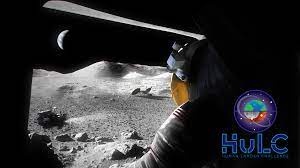NASA’s Human Lander Challenge seeks innovative solutions from undergraduate and graduate students to manage the plume surface contact issue and prevent clouds of dust while landing spacecraft on the lunar surface. The Artemis program aims to establish a regular lunar landing capability for human missions and minimize the risks caused by lunar dust. The challenge encourages students to propose systems-level solutions for minimizing and managing the impacts of plumes and lunar dust, which can damage vital infrastructure and create hazards for astronauts. The challenge invites up to 12 teams to compete at the Human Lander Challenge Forum in Huntsville, Alabama, in June 2024. Each team will receive a stipend to develop technical papers and prototypes to present to a panel of NASA and industry experts. The top three teams will share a total prize of $18,000.
NASA Seeks Student Ideas for Managing Lunar Landing Dust Cloud

NASA is calling on college students to propose solutions for one of the challenging aspects of landing spacecraft on the Moon: managing the dust clouds that can be stirred up during landing and ascent. This issue is known as “plume surface contact,” and it can create significant hazards for human missions on the lunar surface.
As part of the Artemis program, which aims to establish a long-term human presence on and around the Moon, NASA has launched the Human Lander Challenge. The challenge invites undergraduate and graduate students from accredited US colleges and universities to propose innovative, systems-level solutions for minimizing and managing the impacts of plumes and lunar dust on future lunar exploration systems.
The challenge seeks solutions such as making dust shields, developing flight equipment specifically designed for managing plume surface interactions, finding ways to look through the dust cloud during landing, or tracking dust throughout ascent and descent. The goal is to decrease the hazards caused by lunar dust and create a safer landing environment for astronauts, as well as protect the dwellings, mobility systems, research experiments, and other important infrastructure that NASA hopes to install on the Moon’s surface.
Ashley Korzun, lead investigator for plume surface contact at NASA’s Langley Research Center, said, “Understanding and decreasing these impacts are significant hurdles for NASA to solve for safe lunar surface access.”
Up to 12 teams will be selected by NASA to compete at the first Human Lander Challenge Forum in Huntsville, Alabama, in June 2024. Each team will receive a $7,000 stipend to develop a technical paper and any associated design models or prototypes to present in a competitive design assessment to a panel of NASA and industry experts. The top three teams will share a total prize of $18,000, with the first-place team receiving $10,000, the second-place team receiving $5,000, and the third-place team receiving $3,000.
NASA is counting on the Artemis Generation to solve the obstacles that lunar dust brings to complex operations and create a long-term human presence on the Moon for the benefit of humanity.
NASA Seeks Student Solutions for Lunar Dust Management
NASA’s goal is to establish a regular lunar landing capability that allows astronauts to travel safely to and from the Moon’s surface. One of the major challenges that must be addressed is managing the dust that is thrown up by lunar landers. To this end, NASA is partnering with college students to develop innovative solutions for humanity’s exploration of the Moon’s South Pole region under the Artemis program.
Lisa Watson-Morgan, Manager of Human Landing Systems at NASA’s Marshall Space Flight Center, said that managing the dust is a major priority and that she is excited to see what the teams come up with.
Teams interested in participating in the Human Lander Challenge, which is sponsored by NASA’s Human Landing System Program and managed by the National Institute of Aerospace, should review the guidelines and eligibility requirements and submit a non-binding notice of intent by October 22. Proposals are due on March 4.
The Artemis program aims to land the first woman and the first person of color on the Moon, paving the way for a sustainable lunar presence and expanded exploration of the lunar surface.
Don’t miss interesting posts on Famousbio

